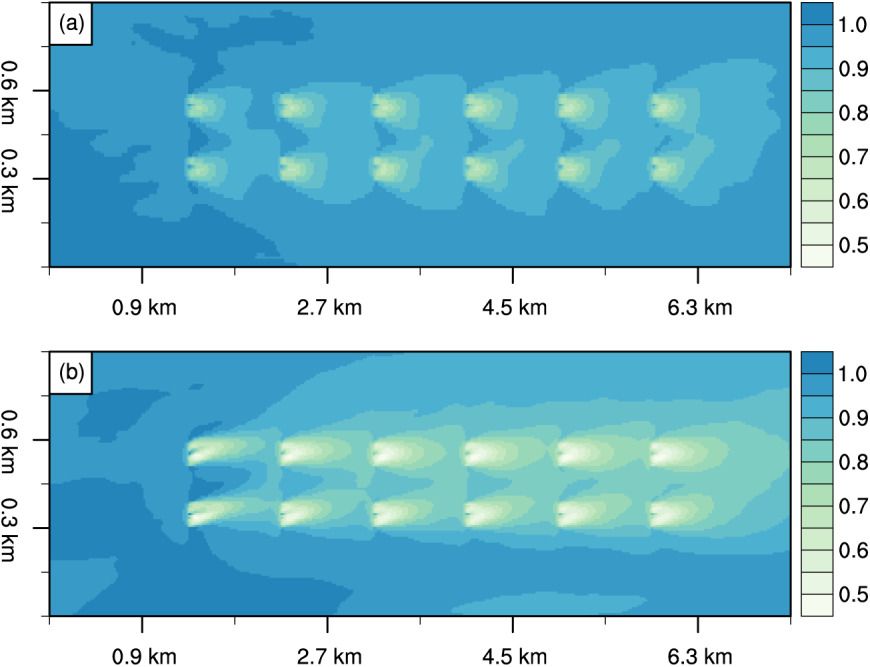
Improved turbulence models (MWR 2010b) and/or immersed boundary methods (MWR 2010a, MWR 2012) may be required to simulate complex flow in stable atmospheric boundary layers or in regions of complex terrain. To elucidate interactions of atmospheric stability with wind turbine wakes, large-eddy simulations with a generalized actuator disk model (Mirocha et al. JRSE 2014, Aitken et al. JRSE 2014, Mirocha et al. JRSE 2015) demonstrate how ambient turbulence accelerates the erosion of wind turbine wakes. These LES of turbine wakes can be used to evaluate mesoscale parameterizations of wind farm effects (Vanderwende et al. JAMES 2016). Additionally, we validated LES in comparison to field data for dispersion experiments (Rybchuk et al. 2021 MWR) and for heterogeneous experiments incorporating wind turbines in the flow (Wise et al. 2022 WES, Sanchez Gomez et al. 2022 in review JRSE). We use finer-resolution simulation tools to represent individual turbines and can assess the impact of the wind profile and atmospheric stability on wakes (Marjanovic et al. 2017 JRSE) and how those wakes decay and affect downwind environments (Tomaszewski et al. 2018 WES). The wind veer and wind shear characteristic of nighttime environments interacts with the direction of turbine rotation in complex ways (Englberger, Lundquist, Dörnbrack, 2020; Englberger, Dörnbrack, Lundquist, 2020).
